One of the more particularly unflattering aspects of aging is hair loss, or alopecia. There are several different forms of alopecia, including male and female pattern hair loss, alopecia areata, and telogen effluvium. I will spend some time explaining these different types, but there are many other causes too, including infection (e.g. bacteria, fungus, mites), trauma, chronic disease (e.g. diabetes, cancer), and as a side-effect of pharmaceutical drugs (e.g. chemotherapy, steroids). While hair loss is not uncommon, and is often temporary, if you experience unexplained hair loss it’s always a good idea to get a diagnosis to rule serious causes. As a symptom, hair loss can tell us a lot about what is happening in the body.
Before delving into the causes of hair loss, it’s a good idea to review both modern and ancient ideas about the structure and function of hair. Science tells us that hair are projections of the skin (epidermis), composed of dead keratinized cells bonded together by extracellular proteins. The shaft is what extends from surface whereas the root lies below the skin. Surrounding root of hair is the hair follicle, and at its base is the bulb, containing blood vessels that provide for nourishment, and the matrix, responsible for the generation of new hairs by cell division. The arrector pili muscle lies adjacent to the follicle, and serves to raise the hair upright under certain influences, such as cold or when the sympathetic (fight or flight) divisions of the autonomic nervous system is triggered. Same as the skin, the color of the hair is due to presence of melanin. Dark hair contains more melanin, whereas blond and red hair contain melanin with more iron and sulfur. Grey hair results from the declining function of tyrosinase, the enzyme necessary for melanin production, whereas white hair arises because of air bubbles that accumulate within the hair shaft.
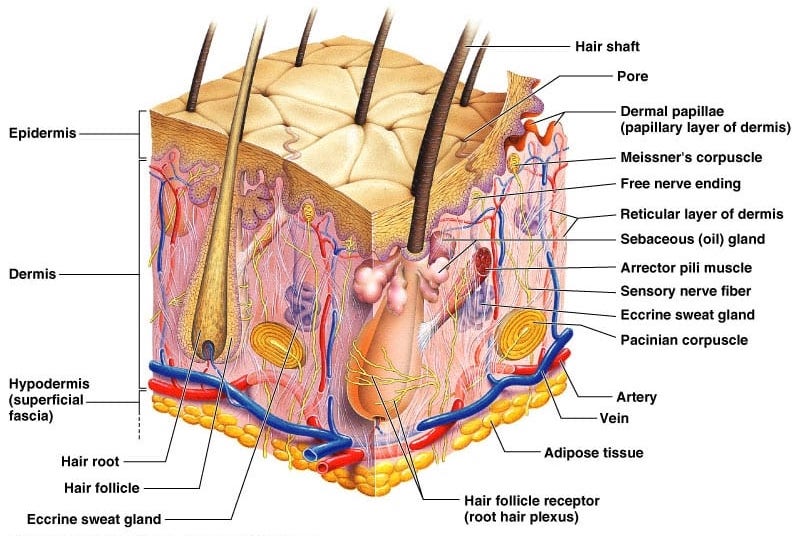
Found on almost all surfaces of the body with the exception of palms and soles, hair serves to protect us against the elements including UV radiation, wind, and cold, and in places such the eyes, nose, and genitalia, against tiny insects, microbes, and foreign particles. Hair growth and distribution is largely determined by sex, genes, and hormonal activity. Normal hair loss in an average adult is between 70-100 hairs per day, and the rate of replacement is dependent upon many factors, including diet, emotional stress, fever, weight loss, chronic illness, blood loss, surgery, chemotherapy, and childbirth.
In Ayurveda, along with the fingernails, hair is viewed as an excretion of asthi dhatu, the tissue element of the body that corresponds to skeletal system. Thus, problems with hair loss can be associated with a deficiency of asthi dhatu, and in certain people, may be related to concurrent issues such as osteopenia and osteoporosis. This form of hair loss would most closely relate to an increase in vata dosha, which is synonymous with deficiency states. The hair also has a strong connection with the skin in Ayurveda, which is viewed as a product of the blood. For example, if there is a deficiency of blood, such as in anemic conditions, this can result in hair loss. The blood, in turn, is viewed as a product of digestion and liver function. In this way, both poor digestion and impaired biliary excretion are also responsible for hair loss, associated with the dosha of pitta and the accumulation of ama, or metabolic waste.
In Chinese medicine, the concept underlying the structure and function of hair is almost identical to that of Ayurveda. Problems with hair loss in Chinese medicine are thus closely linked to with role of Blood (xue), which itself is a product of digestive and transformative functions of the Liver (gan) and Spleen (pi). The Blood in Chinese medicine is closely associated with the yin element of the body, which maintains a lubricating, nourishing, and supportive function, and thus hair loss can be caused by a deficiency of yin. Chinese medical theory also states that the hair is nourished and supported by the bone marrow, which is governed by the function of Kidney (shen), which unlike the anatomical kidneys, is closely related with the vitality (jing) and the yin element of the body.
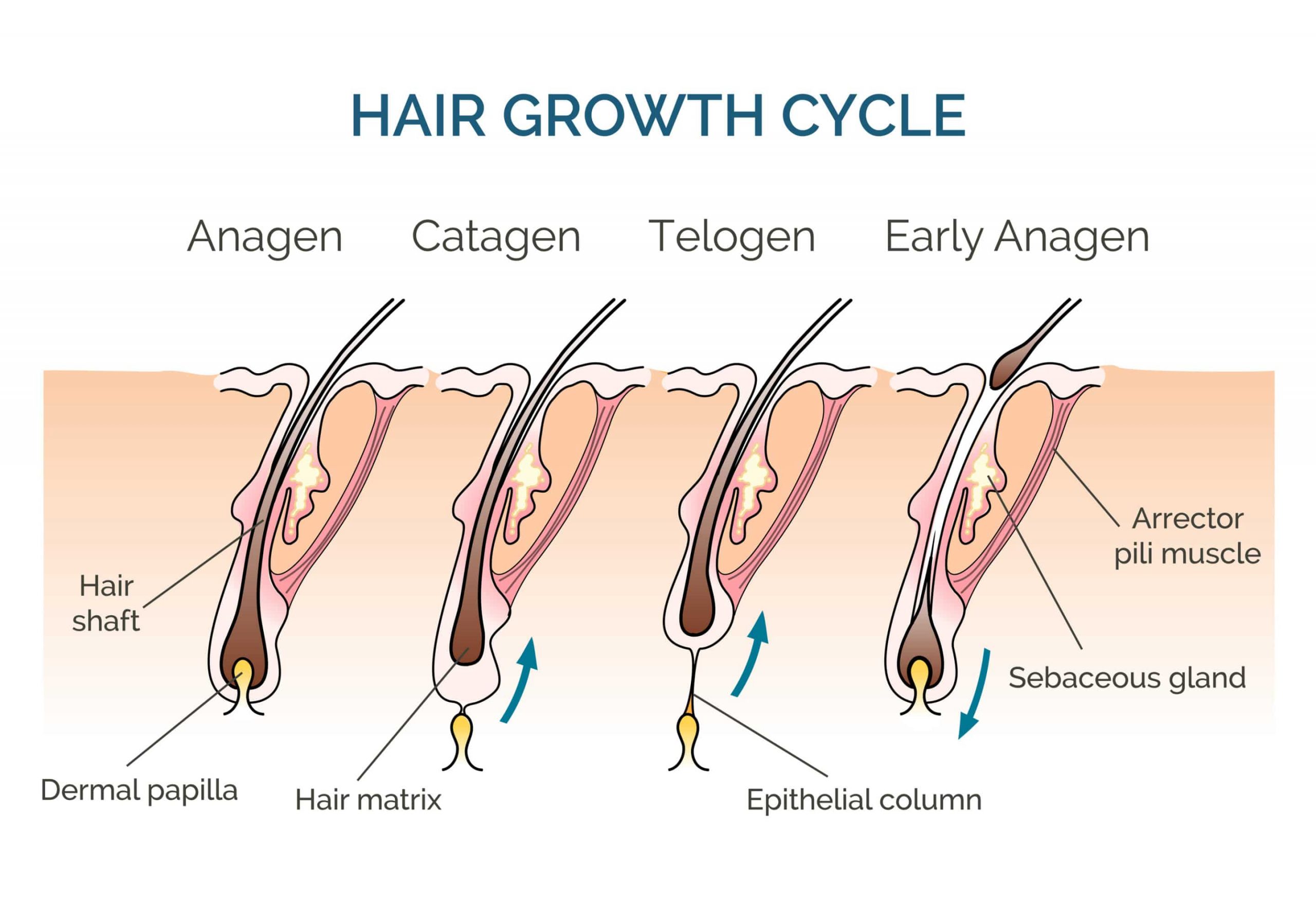
To properly understand hair loss, it’s important to become familiar with the different phases of hair growth, which occurs in three stages. The first is called the anagen stage, or growth phase. For the hairs of the scalp this lasts between 3-5 years for each follicle, but for other body hairs (e.g. face, arms, legs) this lasts between 1-6 months. During youth and middle age, up to 85% of the scalp hairs are in the anagen phase. This growth phase is succeeded by the catagen stage, in which the follicle ceases growth, typically lasting just a few weeks. Typically, only about 1% of hairs are in the catagen stage. The telogen stage is the resting phase of the hair growth cycle, in which the follicle can lie dormant for up to four months. At any given point, about 15% of the scalp hairs are in the telogen stage, before (hopefully!) moving to back to the anagen phase.
Androgenic hair loss
Male pattern hair loss, or androgenic alopecia, is among the most common forms of hair loss, relating to a gradual decline in the androgens such as testosterone, which in men, promotes and maintains hair growth. In a feature called the “androgen paradox” however, high levels of testosterone can actually promote the loss of scalp hair while simultaneously increasing facial hair. As men age, the activity of an enzyme called 5-alpha reductase typically increases, promoting the conversion of testosterone into a much more potent form called dihydrotestosterone (DHT), hastening the process of hair loss while increasing facial hair. Thus, even though overall levels of testosterone decrease with age, in some men the relative balance of DHT may increase, hastening the process of hair loss while not just the beard, but also the nose, eyebrow, and ear hairs take on an unruly appearance. While this process is similar for all men as they age, genetic factors play a role in the relative severity of the condition.
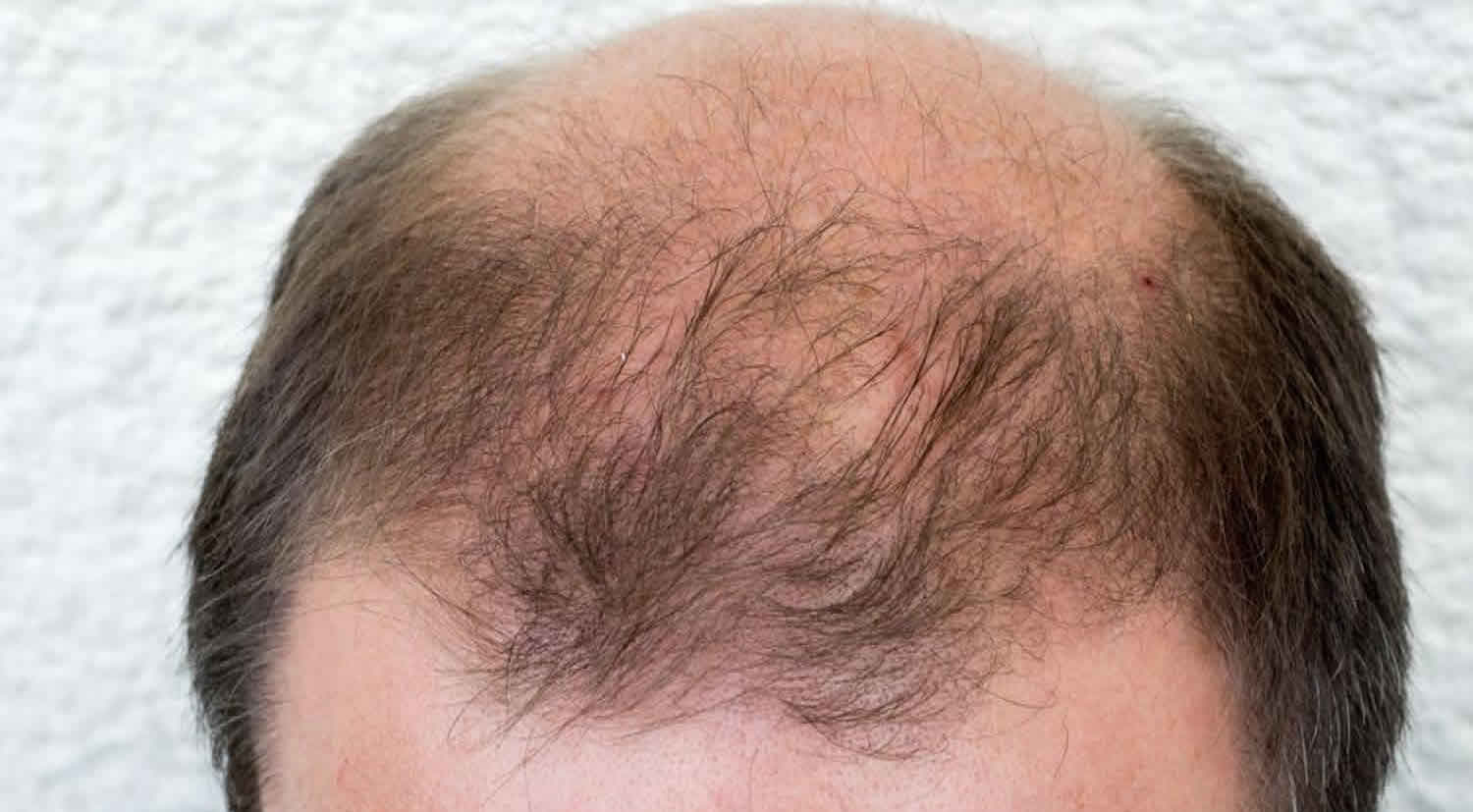
Androgenic alopecia
The mechanism of hair loss in androgenic alopecia relates to the accumulation of DHT in the follicles of the scalp hair, which inhibits the anagen phase while lengthening the telogen phase. Under the influence of DHT, the hair follicle begins to get smaller, undergoing a process called “miniaturisation”, transforming the hair shaft from its normal appearance to one that becomes shorter, thinner, and less pigmented. With each successive hair growth cycle, the anagen phase gets shorter while the telogen phase gets longer, and eventually, hair growth diminishes and can even cease entirely.
Most female pattern hair loss is also considered to be a form of androgenic alopecia, although for females there are often other factors at play. Similar to men, hair growth in women is regulated by estrogen, which in a somewhat opposite pattern to testosterone in men, promotes scalp hair growth while limiting body hair. Thus, as women age and estrogen levels decline, the scalp hair may begin to thin from this deficiency, although the loss typically isn’t as severe as it is for men. As estrogen levels decrease, however, there is a relative increase in DHT, resulting in this same process of follicle miniaturisation, but because DHT levels are not as high as men, the hair loss is usually not as severe. In women that have polycystic ovarian disease, in which androgens are significantly elevated, this results not just in more severe hair loss, but an increase in facial and body hair.
Autoimmune hair loss
Another form of hair loss is autoimmune in nature, in which the immune system targets hair follicles in the anagen phase, either disrupting their function or completely destroying them. Alopecia areata or “patchy” hair loss is thought to be related to former, and when the dysfunctional immune response diminishes, hair growth can be restored. In some cases hair loss on the scalp can be total, called alopecia totalis, and in the most severe form, all of the body hair can be lost including the eyebrows and eyelashes, called alopecia universalis.
Typically, the more severe the hair loss, the more difficult it is to recover, but results depend on successfully resolving the underlying factors. Autoimmune-mediated hair loss is closely linked to other autoimmune conditions such as rheumatoid arthritis, type 1 diabetes, and Hashiomoto’s (thyroiditis). In both Ayurveda and Functional Medicine, autoimmunity is caused by intestinal permeability, which undermines the function of selective permeable barriers elsewhere in the body that are maintained by immune cells. One important example is the blood brain barrier that prevents against the entry of foreign pathogens and drugs into the central nervous system. Another example of this “selective permeability” feature is the hair follicle itself, which like the gut, is home to commensal bacteria that regulate its function, and thus regulating the immune response in this area allows for optimal function. A loss of immune regulation caused by intestinal permeability in turn results in a loss of immune privilege within the hair follicle, allowing the immune system to attack and destroy it.
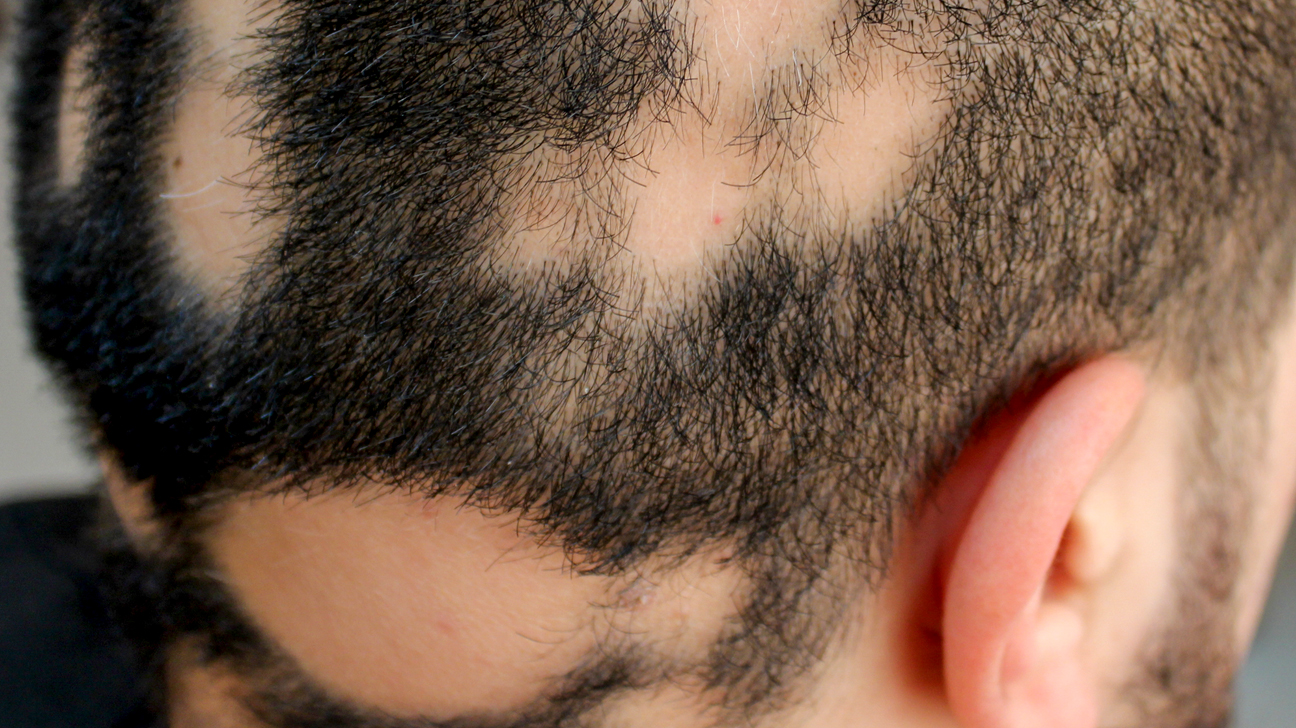
Alopecia areata
There are a large number of factors that contribute to intestinal permeability including diet (gluten, casein, lectins, lactose), drugs (e.g. alcohol acetaminophen, aspirin), and dysbiosis (e.g. bacterial, viral, or fungal infection). This in turn, results in the development of cross-reactivity between foreign molecules and the tissues of the body, in which the immune system loses its ability distinguish between self and non-self. Research has shown that autoimmune conditions display antibodies that can be triggered by molecules such as gliadin (in wheat) or casein (found in milk), which cross react with self-antigens and attack the host tissues. Dermatologists will often distinguish alopecia as either scarring (cicatricial) or non-scarring (noncicatricial), in which scarring represents the immune destruction of the hair follicles, and as result, depending on the severity of the reaction, can mean that the regrowth of the lost hair is essentially impossible.
Telogen effluvium
Another frequent cause of alopecia is telogen effluvium, which if you recall from my earlier explanation, relates to the resting phase of the hair cycle (telogen) and the subsequent “shedding” (effluvium) of the hair shaft. In telogen effluvium a significant percentage of hair follicles enter into the telogen stage at the same time, resulting in the shedding of the hair shaft and subsequent thinning. Unlike the specific causes of androgenic and autoimmune hair loss, telogen effluvium usually relates to some kind of acute trauma or stressor, such as chemotherapy, poisoning, elevated fever, childbirth, surgery, nutrient deficiencies, hemorrhage and anemia, and periods of intense emotional stress.
Telogen effluvium associated with childbirth (i.e. telogen gravidarum) results from elevated levels of placental hormones that promote hair growth that suddenly diminish after giving birth. This causes the follicles to enter into the catagen stage, after which the hair is then shed over a succeeding 3-6 month period. This can also be exacerbated by a poor diet and nutrient deficiencies.
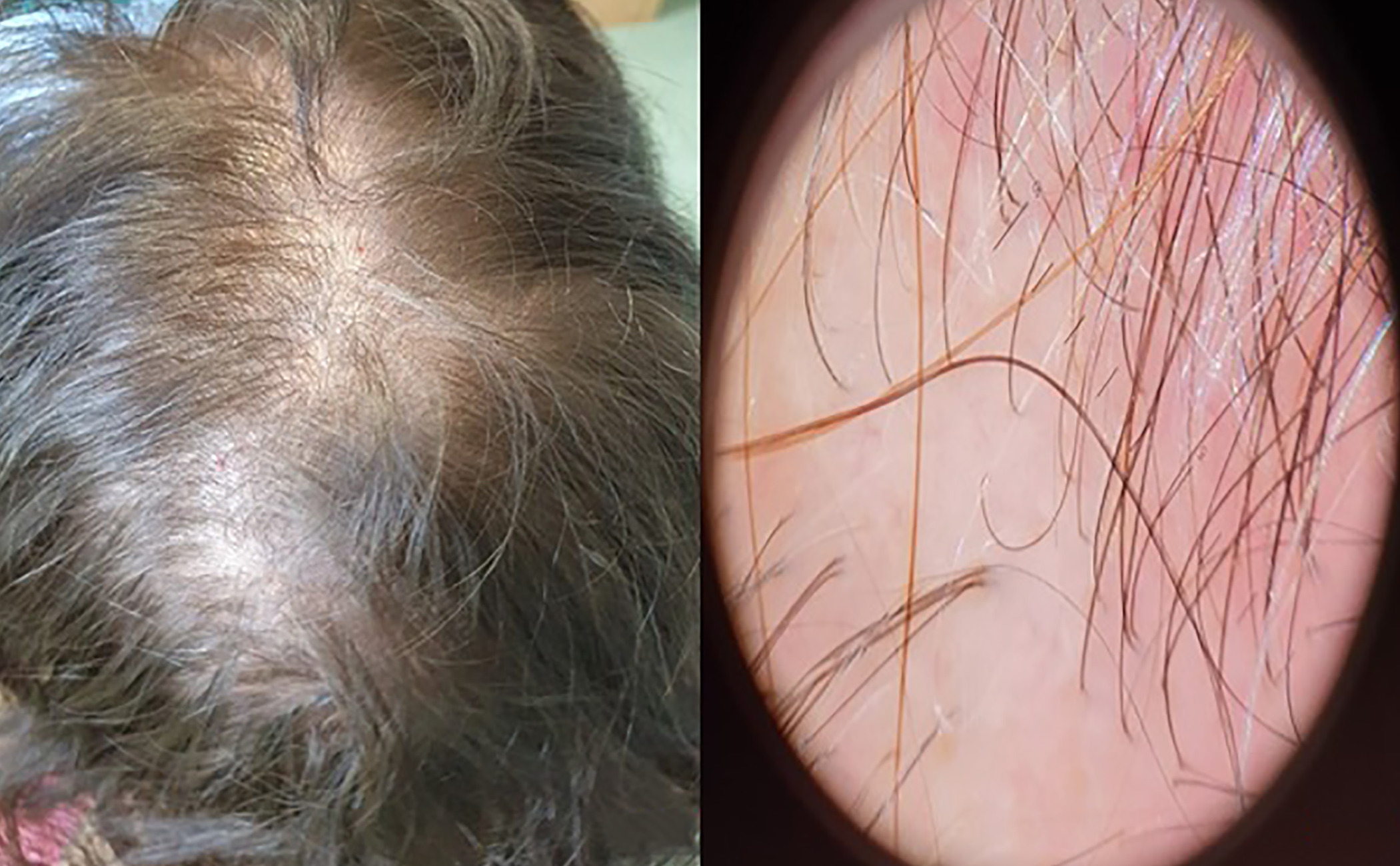
Telogen effluvium
Another frequent cause of telogen effluvium are thyroid disorders, including hypo- and hyperthyroid conditions, both of which are more prevalent among women. Given that most thyroid disorders are autoimmune in nature (e.g. Hashimoto’s, Graves’), the earlier points described under alopecia areata apply here as well. The pattern of hair loss seen in hypothyroidism typically manifests over the frontal region of the head, including a thinning of the lateral portion of the eyebrows, whereas in hyperthyroidism the hair loss is more often seen in the parietal region, or the upper back region of the head. Hypothyroidism has a general effect of inhibiting mitosis (cellular division), causing follicles to enter into catagen while inhibiting the anagen stage, and in long-standing conditions, can result in atrophy of the follicles.
Other factors that make telogen effluvium a more frequent cause of hair loss in females include nutrient deficiencies of protein, biotin (B7), riboflavin (B2), iron, sulfur, zinc, selenium, and copper. This appears to be related to a higher frequency of orthorexia in females, in which following a supposedly healthy diet (e.g. veganism) results in the person becoming unhealthy. Nutrient deficiencies are also a more likely cause in women due to the loss of nutrients through menstruation, pregnancy and childbirth, and lactation. Telogen effluvium is also common in women taking drugs such as clomiphene that are prescribed for those struggling with infertility.
Trauma alopecia
Another common form of alopecia is caused by trauma to the hair shaft or follicle, such as pulling upon and straining the hair by wearing very tight ponytails or cornrows. While regular brushing and scalp massage is considered to be helpful for hair growth, excessive brushing and in particular the application of heat can damage the cuticle, causing the hair shaft to become weak and break, giving rise to the appearance of thinning hair. In Ayurveda, there is a close relationship between the increase of pitta and hair loss, and thus in general, it is not advised to apply any heat to the head – such as a hot shower or a hair dryer – which not only damages the hair but is considered to be problematic for the eyes and brain. In older men, trauma-induced hair loss is frequently seen with the loss of hair on the lower leg from a lifetime of wearing socks, although this is exacerbated by androgenic factors and a general decline in testosterone status.
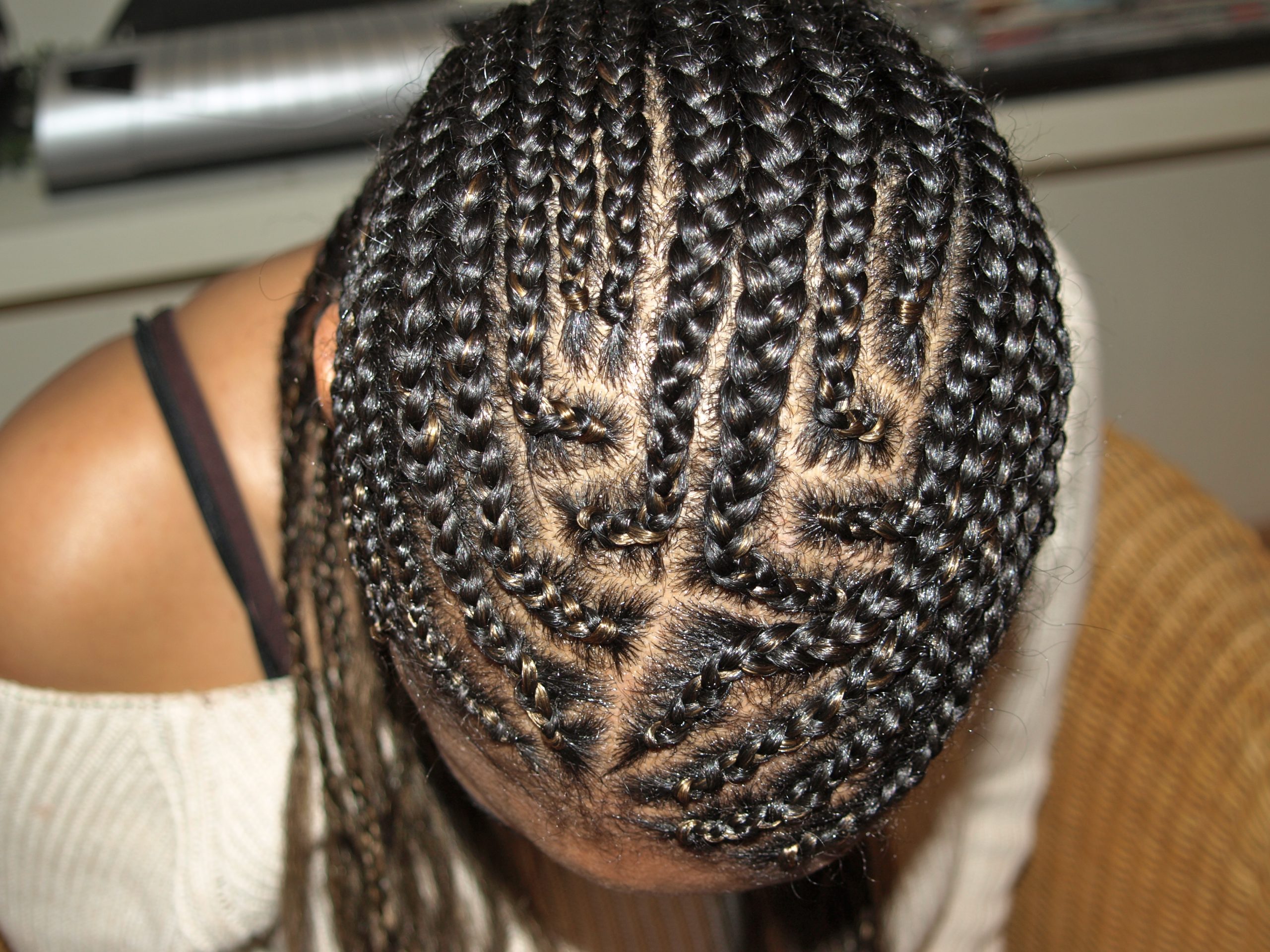
Ideally, cornrows should only be worn for short periods to avoid damage to the hair
Trichotillomania is a form of trauma-induced hair loss caused when a person obsessively pulls or plucks at their hair including the eyebrows. Rather than being a disorder of the hair per se, the issue of trichotillomania is related to anxiety and obsessive compulsive disorder, and has its highest prevalence in prepubertal and young adolescent females that may be struggling with body image issues. In some cases, the patient will actually consume the hair they’ve plucked, called trichophagia, and this can result in the formation of bezoar (hair ball) that can cause very serious gastrointestinal issues.
Holistic treatment of alopecia
The successful treatment of any kind of alopecia must take into consideration the underlying cause. While this article provides a number of different examples, it by no means addresses all the different factors of hair loss. Nonetheless, there are some time-honored strategies that can be used in most cases to support hair growth regardless of sex or cause.
Given the suggestion in both Ayurveda and TCM that hair growth is intimately connected to the health of the bones and hence mineral status, ensuring a healthy diet rich in minerals is an important first step. One of my favorite methods to remineralize the body is to use medicated meaty-bone broth supplemented with medicinal herbs such as kelp, nettle, oatstraw, and horsetail. The latter two herbs are rich sources of silica which is an under-appreciated nutrient to promote the maintenance of bone and its associated tissues including the hair and nails. At the same time, it is wise to avoid or limit foods that impair mineral status including sugar, soft drinks, phytates (e.g. whole grains and legumes), oxalates (e.g. spinach, rhubarb, knotweed), and alcohol. As long as the diet is rich in minerals, it is also fine to supplement with judicious amounts of iron, zinc, selenium, and copper. Sulfur is another important mineral to support hair growth that is easily available in foods such as garlic, onions, cruciferous vegetables, and spices such as hing (Ferula narthex).
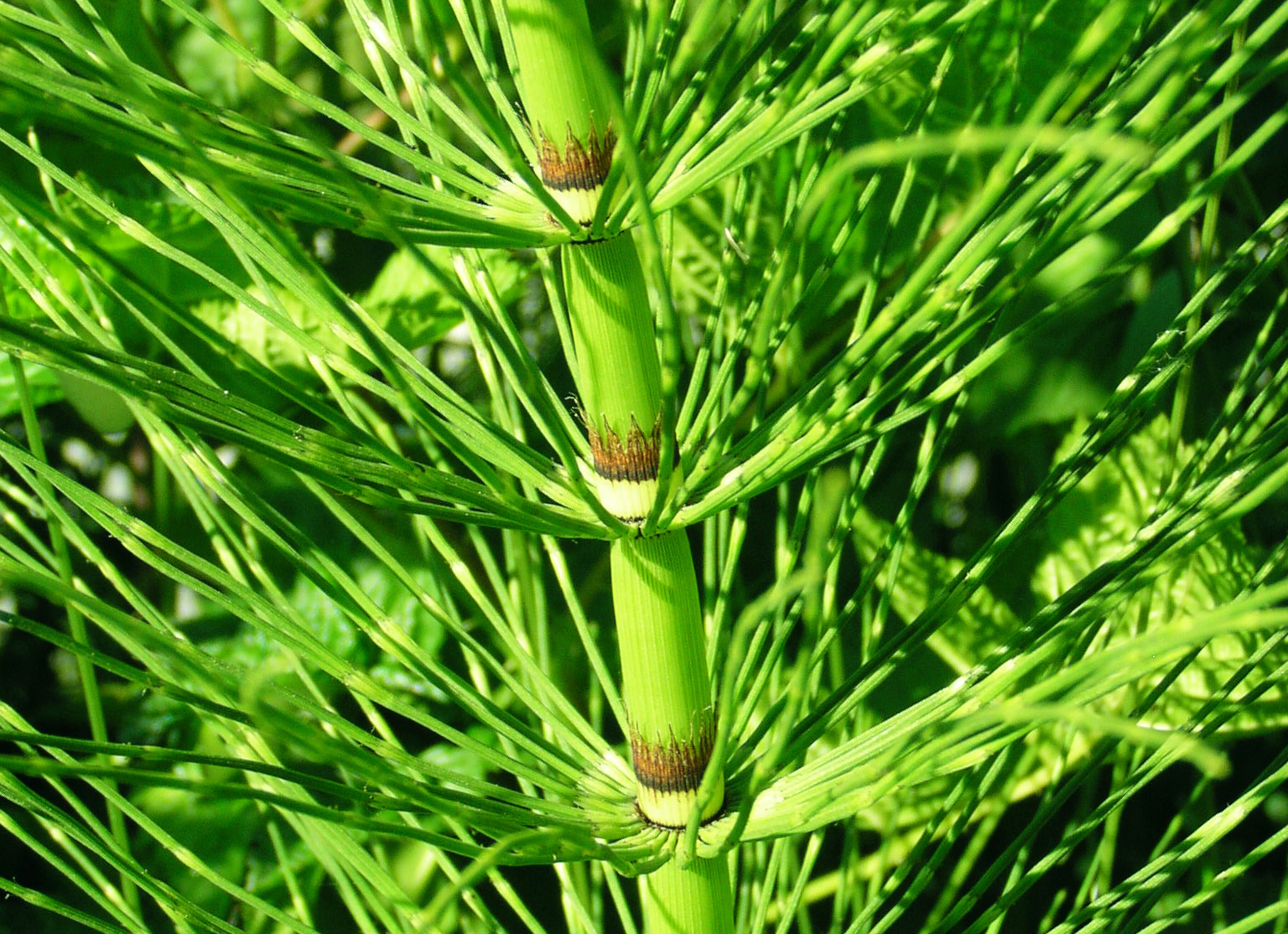
Horsetail (Equisetum arvense), a rich source of silica
The B vitamins including biotin (B7) and riboflavin (B2) are also important and sometimes deficient in the diet, and because they are water-soluble and don’t accumulate in the body, are generally safe nutrients to supplement for. The risk of deficiency of not just these but most B vitamins increases with pregnancy, and because they all work together, it’s generally a good idea to supplement with a complete B vitamin complex that also includes methyl folate (B9) and methyl cobalamin (B12). Deficiencies of other vitamins are also associated with hair loss including vitamins A, C and D3.
For androgenic hair loss specifically, I frequently recommend herbs that contain naturally occurring 5-alpha-reductase inhibitors such as saw palmetto (Serenoa serrulata), nettle root (Urtica dioica), and gokshura (Tribulus terrestris). For males I often add herbs that generally improve testosterone status and virility including ashwagandha (Withania somnifera), ren shen (Panax ginseng), and milky oats (Avena sativa). For females suffering from androgenic alopecia I use “feminizing”, blood-nourishing herbs that restore ovulation such as bai shao (Paeonia lactiflora), chasteberry (Vitex agnus castus), and shu di huang (prepared root of Rehmannia glutinosa), along with a low carbohydrate diet. For perimenopausal women I will often use similarly blood-nourishing herbs along with those that more specifically help to overcome estrogen deficiency including shatavari (Asparagus racemosa) and dang gui (prepared root of Angelica sinensis).
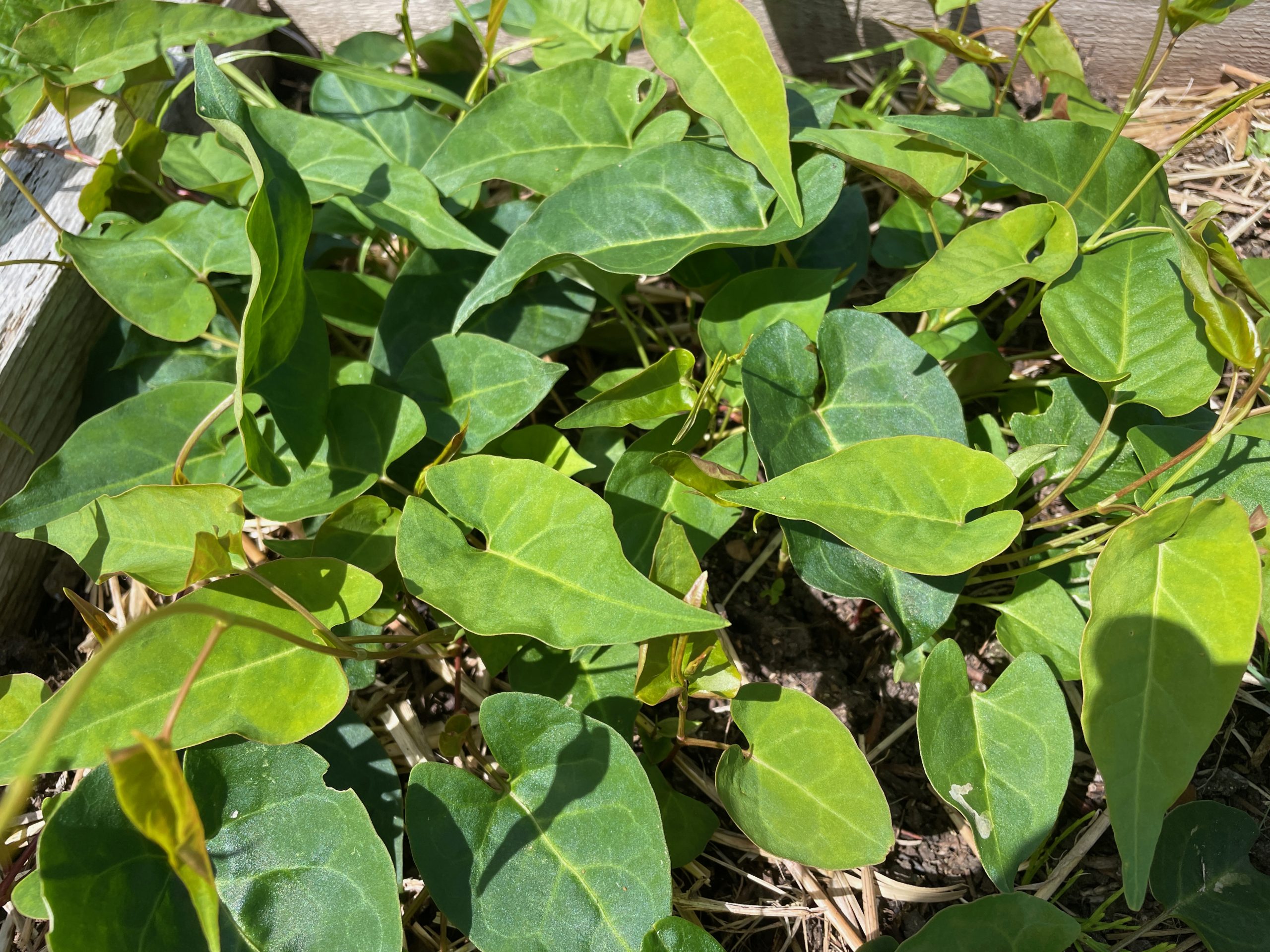
He shou wu (Polygonum multiflorum), an antiaging herb for hair loss
One of the more important blood-nourishing and anti-aging herbs used in Chinese medicine for hair loss is he shou wu (Polygonum multiflorum). The story goes that one day a middle-aged, unmarried fellow named Mr. He was digging in his garden, and came across this plant, and noticed that the way it was twining around itself was reminiscent of a lover’s embrace. Inspired, he dug up the root and began to consume it. The reason Mr. He had never married was that he had been so weak since childhood, with not much libido, and now during middle age, noticed that this problem was getting worse along with his head hair turning grey. Within a week of consuming the herb, however, he began notice his libido shifting, and after a year of consuming it, his greying hair reverted back to a shiny, black colour. When he walked through the village, the people would remark upon his improved vigor and shiny black hair, and feeling thus emboldened, decided to get married and then soon fathered a child. Ever since then, this herb as been known as he shou wu, or “Mr. He’s shiny black hair”.
In both Ayurveda and TCM hair loss can be caused by excess heat, which in particular affects the hepatobiliary system, and thus herbs that promote bile flow and alleviate liver congestion are often important, including turmeric (Curcuma longa), chai hu (Bupleurum chinensis), and dandelion root (Taraxacum officinale). For androgenic hair loss, many of these liver herbs exhibit a 5-alpha-reductase property, and thus help to correct hormonal imbalances. Among the different liver herbs for hair, however, there is perhaps none as vaunted as a diminutive member of the aster family called Eclipta prostata – in Ayurveda known as bhringaraj, and in Chinese medicine as han lian cao.
In both Ayurveda and Chinese medicine Eclipta has long been recognized as useful herb for hair loss. In Ayurveda the names “bhringaraj” and “kesharaj” mean “king of the hair”. In Chinese medicine, this herb is used to nourish the yin of the Liver and Kidney, to treat problems such as dizziness, blurred vision, vertigo, and premature graying of the hair. In Ayurveda, bhringaraj has a large number of uses, is balancing to all three doshas, and is specifically mentioned as a rejuvenative (rasayana) for pitta. It has particular utility disease of the liver, blood, and skin, and benefits disorders of the head and brain, used to improve memory and mental function. But perhaps its most frequent use in Ayurveda is for premature greying and hair loss, prepared as a medicated oil called Bhringaraja taila. Its virtues extolled by several classical Ayurveda texts, Bhringaraja taila is prepared with the juice of the fresh herb along with other herbs, and can be applied topically to the head to promote hair growth, and is also used as nasya (oil drops) to improve brain function. Recent research suggests that Bhringaraja taila has a capacity to promote hair growth that supersedes pharmaceutical options such as minoxidil, the latter of which also has some negative side effects such as skin irritation and burning sensation.
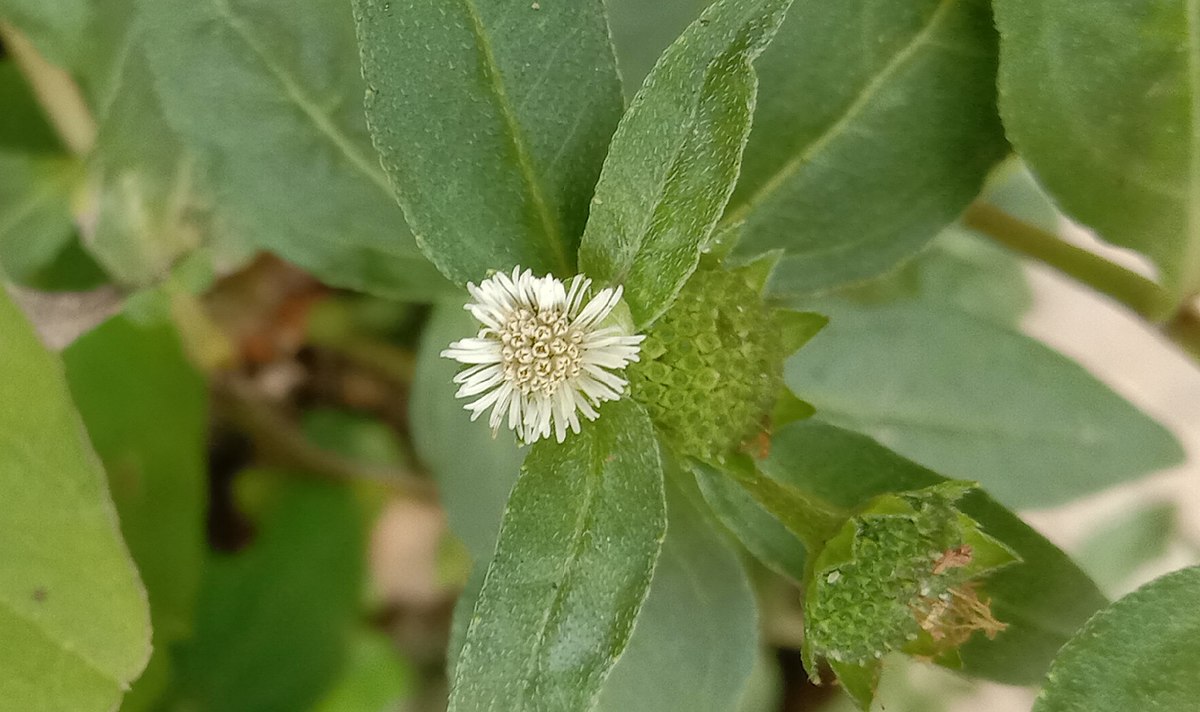
Bhringaraj (Eclipta alba), the “king” of the hair
To use Bhringaraja taila, pour the oil into your palm and apply to the affected region of your scalp. You can apply as much as needed, but typically not so much that it starts to drip down the sides of your head. It is definitely easier to use this oil if you have short hair, but I have had patients with long hair that are able to use it, if they don’t mind their hair being a little greasy. After applying it, leave the oil on your head for as long as possible, and then rinse it out later, using a mild soap (e.g. diluted Dr. Bronner’s) or a decoction of soap nuts, making sure to use no more than room temperature water (remember that hot water in Ayurveda is thought to hasten the process of hair loss).
Another useful intervention for androgenetic alopecia and alopecia areata is the practice of microneedling. First mentioned in the classical texts of Ayurveda, modern microneedling involves the use of a device equipped with fine needles to create tiny punctures in the scalp. This controlled injury triggers the body’s natural healing process, stimulating blood flow and cytokine release, which can promote hair growth by increasing the production of factors that foster hair follicle regeneration. To perform microneedling, I suggest using a product called a derma-stamp that has an adjustable depth for needle penetration, applied to the affected areas of the scalp before the application of topical agents. To promote scalp hair growth I suggest using a depth of 1.5mm, and gently but firmly pressing the device into the scalp several (10) times, before moving on to the next section. Ensure even coverage by following a pattern, moving in rows or following a grid pattern across the areas you are treating, so that you don’t miss any spots and that the treatment is uniformly applied. Once you’re finished with the device, ensure that you sterilize it with something like isopropyl alcohol.
Following microneedling, you can then apply the topical treatments described above. While drugs such as minoxidil and/or finasteride are recommended for androgenetic alopecia, I have used a preparation comprised of equal parts tincture of saw palmetto and he shou wu, mixed with 5% DMSO to enhance delivery, and rubbing this into the scalp. Following this, a liberal amount of Bhringaraja taila can be applied to the region, rubbing it into the scalp for several minutes, and leaving it on for several hours before washing it out. While the Bhringaraja taila can be applied every day, I suggest microneedling and using the natural DHT blockers not more than once a week. Make sure to be consistent with treatment over several months to see lasting results.
While I am not overtly concerned about hair loss, at age 55 I do recognize that my hair has become thinner with aging. So, earlier this year I decided to experiment with the technique described above for a three month period, and here were my results:
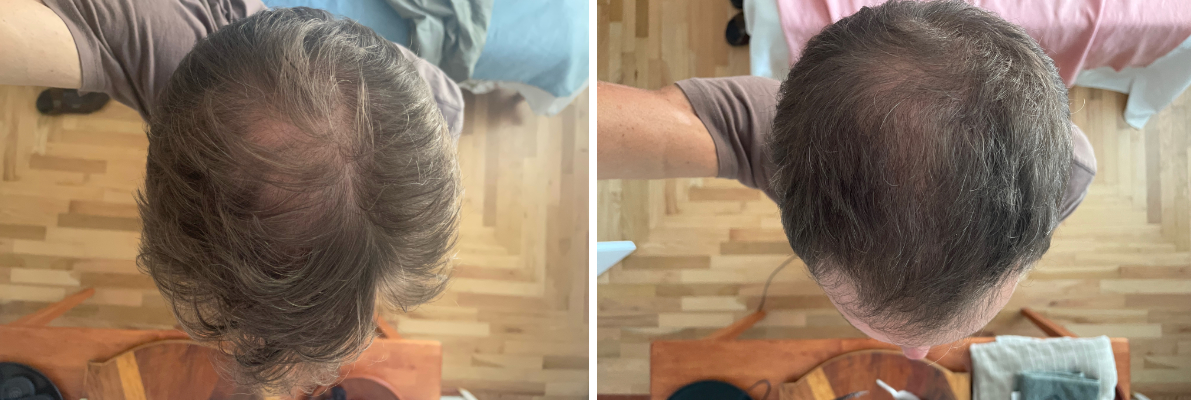
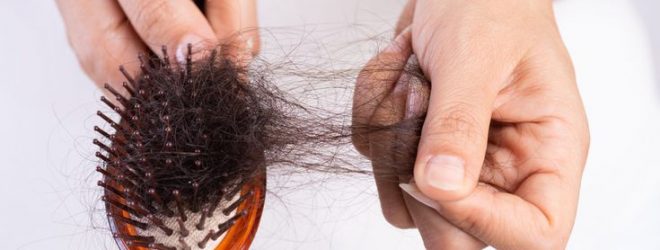

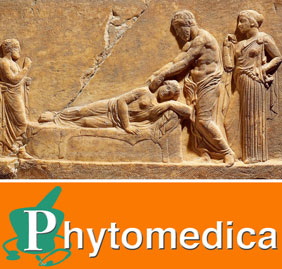
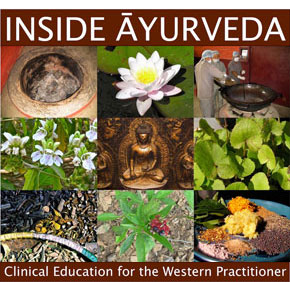

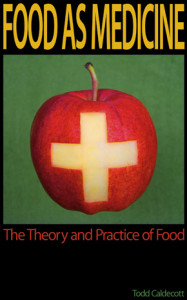
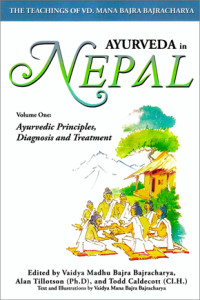
Speak Your Mind